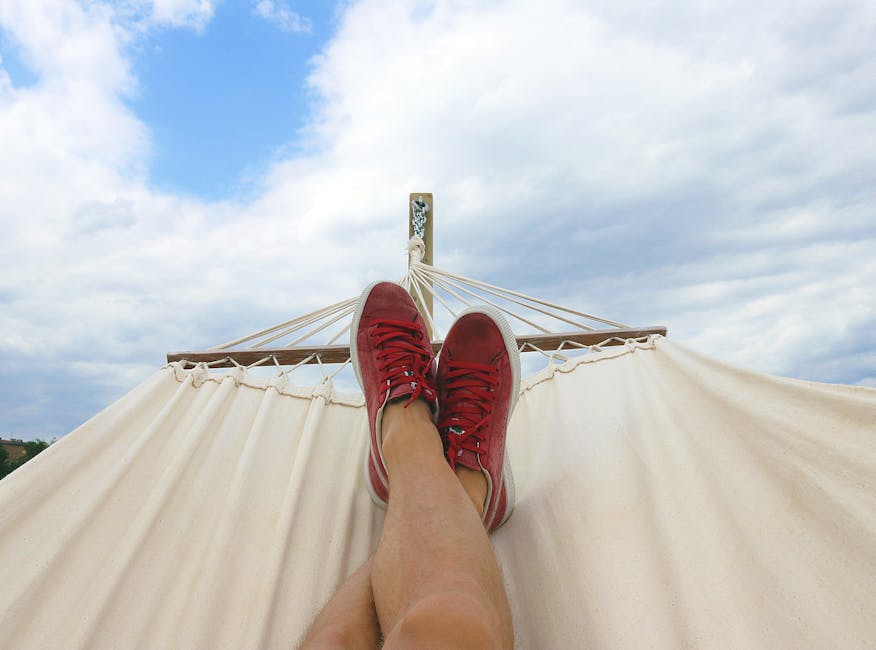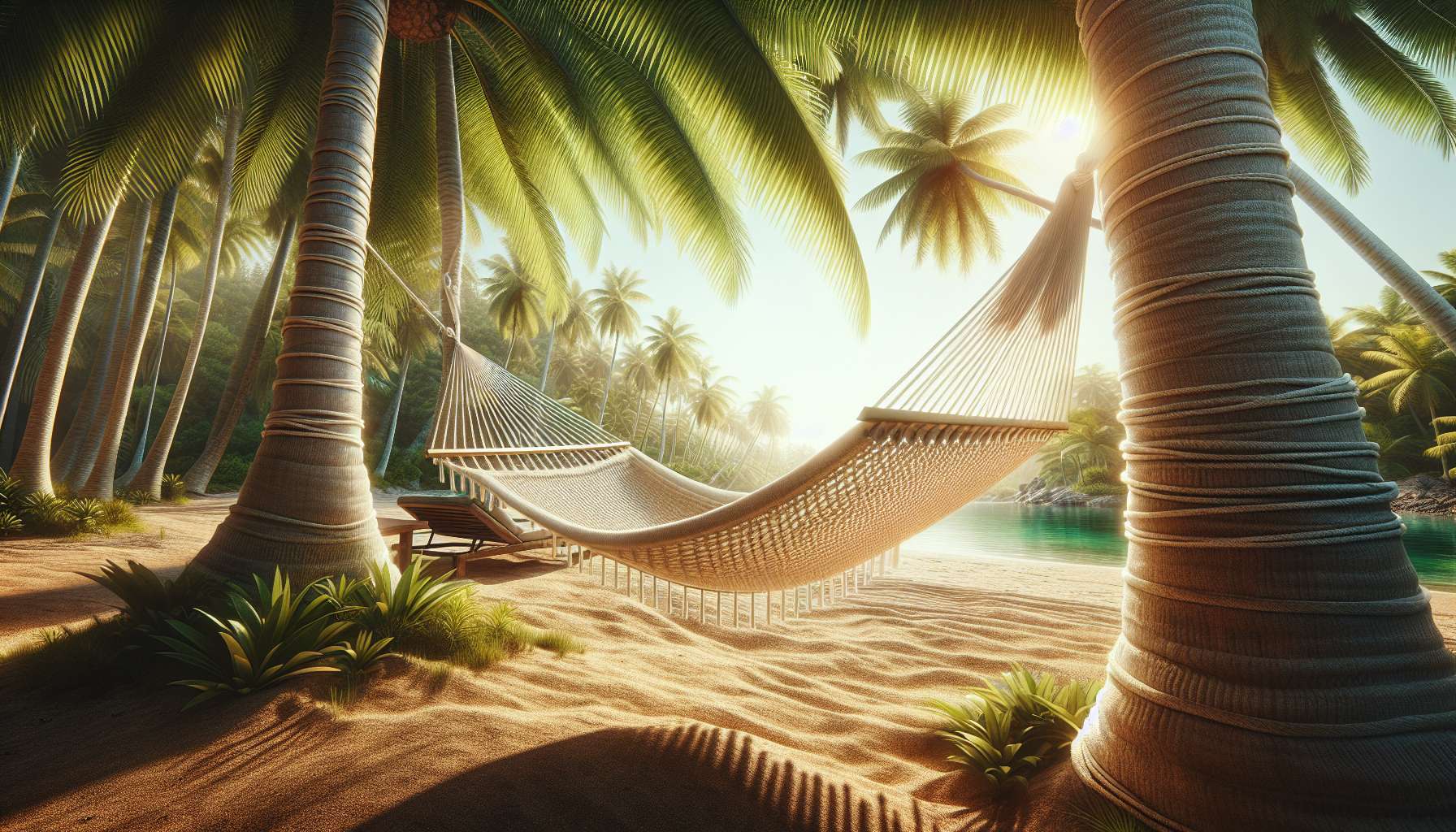Hammocks: A Comprehensive Guide to History, Types, and Benefits
Hammocks, the iconic symbol of relaxation, leisure, and comfort, have been around for centuries, offering a unique way to unwind and enjoy the great outdoors. From ancient civilizations to modern-day backyard escapes, hammocks have evolved in style and function, becoming a staple in homes, beaches, campsites, and even offices. In this comprehensive guide, we will delve into the fascinating world of hammocks, exploring their history, various types, benefits, and much more. So, grab a cozy seat (or hammock!) and let’s swing into the world of hammocks.
The History of Hammocks
The history of hammocks dates back thousands of years, with origins tracing back to Central and South America. The word “hammock” itself is said to have come from the Taino people of the Caribbean, who used woven tree bark to create sleeping surfaces that were suspended between trees. These early hammocks were practical solutions for sleeping off the ground, providing protection from insects, snakes, and other ground-dwelling creatures.
As European explorers discovered the Americas, they quickly adopted the hammock for its practicality and comfort. Sailors, in particular, found hammocks to be ideal for sleeping on ships, as they helped to maximize space and stability in the confined quarters of a vessel. The widespread use of hammocks among sailors eventually led to the hammock becoming a common fixture on naval ships, with each sailor being assigned a hammock for sleeping.
Throughout history, hammocks have also been used for ceremonial purposes, social gatherings, and as symbols of status and wealth. In some cultures, hammocks were reserved for royalty and nobility, showcasing the luxurious and elite nature of these suspended beds.
The Evolution of Hammocks
Over the years, hammocks have undergone significant transformations in terms of materials, design, and construction. Traditional hammocks were typically made from natural fibers like cotton, linen, or tree bark, woven together to create a strong and durable sleeping surface. Today, hammocks are available in a wide range of materials, including polyester, nylon, and even weather-resistant fabrics for outdoor use.
In addition to materials, hammocks have also evolved in terms of design and style. Traditional hammocks were simple, rectangular shapes that were suspended between two trees or poles. Today, hammocks come in various shapes and sizes, including Brazilian-style hammocks (wide and cozy), Mayan hammocks (lightweight and breathable), and camping hammocks (compact and portable).
Modern hammocks also feature innovative accessories and attachments, such as mosquito nets, rain flies, and hammock stands, making them even more versatile and convenient for outdoor enthusiasts. With so many options to choose from, finding the perfect hammock to suit your needs and preferences has never been easier.
The Benefits of Hammocks
Aside from the obvious comfort and relaxation that hammocks provide, there are numerous health and wellness benefits associated with using a hammock. Here are some of the key benefits:
1. Improved Sleep Quality
Research has shown that sleeping in a hammock can lead to deeper and more restful sleep. The gentle rocking motion of a hammock mimics the natural rhythm of a mother’s womb, helping to lull you into a state of relaxation and tranquility. This can result in improved sleep quality, reduced insomnia, and overall better mental and physical health.
2. Back Pain Relief
Hammocks are known for their ergonomic design, which can help alleviate back pain and improve posture. When you lie in a hammock, your body naturally adopts a more neutral position, reducing pressure on your spine and muscles. This can be especially beneficial for individuals who suffer from chronic back pain or stiffness.
3. Stress Reduction
The gentle swaying motion of a hammock has been shown to reduce stress levels and promote relaxation. This rhythmic movement triggers the release of endorphins, also known as the “feel-good” hormones, which can help combat anxiety and elevate your mood. Spending time in a hammock can be a simple yet effective way to unwind and de-stress after a long day.
4. Improved Circulation
By elevating your legs and reclining in a hammock, you can improve blood circulation throughout your body. This can help reduce swelling in your legs, alleviate varicose veins, and prevent blood clots from forming. Regularly using a hammock can contribute to better overall circulation and vascular health.
5. Outdoor Connection
One of the greatest benefits of hammocks is their ability to connect you with nature and the great outdoors. Whether you’re lounging in your backyard, camping in the wilderness, or relaxing on the beach, a hammock allows you to immerse yourself in the sights, sounds, and smells of nature. This connection with the outdoors can have a profound impact on your mental well-being and sense of peace.
Choosing the Right Hammock
With so many options available, choosing the right hammock can be a daunting task. Here are some key factors to consider when selecting a hammock:
1. Size and Capacity
Consider how many people will be using the hammock at once and the weight capacity it can support. Single hammocks are ideal for solo lounging, while double or family-sized hammocks can accommodate multiple users comfortably.
2. Material and Durability
Choose a hammock made from high-quality materials that are durable, weather-resistant, and easy to clean. Consider factors like breathability, stretch resistance, and UV protection when selecting the fabric for your hammock.
3. Suspension System
Look for a hammock with a reliable suspension system, such as straps, carabiners, or ropes, that is easy to set up and adjust. Adjustable suspension systems allow you to customize the height and tension of your hammock for optimal comfort.
4. Portability and Packability
If you plan to take your hammock on outdoor adventures, choose a lightweight and compact hammock that is easy to transport and pack. Consider factors like pack size, weight, and included storage bags when selecting a portable hammock.
5. Accessories and Add-Ons
Explore additional accessories and add-ons for your hammock, such as mosquito nets, rain flies, underquilts, and hammock stands. These accessories can enhance the comfort, versatility, and functionality of your hammock for various outdoor activities.
Expert Opinions on Hammocks
To gain further insights into the benefits and uses of hammocks, we reached out to renowned outdoor enthusiasts and experts for their thoughts on hammocks:
John Smith, Outdoor Adventurer:
“Hammocks have been a game-changer for my camping trips. Not only do they provide a comfortable place to relax and sleep, but they also elevate my outdoor experience by connecting me with nature on a deeper level. I highly recommend investing in a quality hammock for your next adventure.”
Dr. Emily Green, Sleep Specialist:
“As a sleep specialist, I often recommend hammocks to my patients who struggle with sleep disorders or chronic pain. The gentle rocking motion of a hammock can induce a state of relaxation that promotes restful sleep and reduces stress. Incorporating a hammock into your bedtime routine can have significant benefits for your overall sleep quality.”
Common Misconceptions About Hammocks
Despite their popularity, hammocks are sometimes surrounded by misconceptions that can deter people from enjoying their benefits. Here are some common misconceptions about hammocks:
1. Hammocks are Uncomfortable
While some people may assume that hammocks are uncomfortable or unsupportive, modern hammocks are designed with comfort in mind. By selecting the right hammock size, material, and suspension system, you can create a cozy and ergonomic sleeping surface that rivals a traditional bed.
2. Hammocks are Only for Camping
Although hammocks are popular among campers and outdoor enthusiasts, they are versatile enough to be used in various settings. From backyard lounging to beachside relaxation, hammocks can be enjoyed by anyone looking to unwind and enjoy the outdoors.
Comparative Analysis of Hammock Types
When it comes to choosing a hammock, there are several types to consider, each with its unique features and benefits. Here is a comparative analysis of some popular hammock types:
1. Brazilian Hammocks
Known for their wide and cozy design, Brazilian hammocks are ideal for relaxing and lounging. They are often made from cotton or polyester fabrics, offering a comfortable and breathable sleeping surface. Brazilian hammocks are perfect for backyard use or indoor relaxation.
2. Mayan Hammocks
Lightweight and breathable, Mayan hammocks are handwoven using traditional techniques that have been passed down through generations. These hammocks are known for their intricate patterns and vibrant colors, making them a stylish and functional addition to any outdoor space.
3. Camping Hammocks
Designed for outdoor adventures, camping hammocks are lightweight, compact, and easy to set up. They typically come with integrated bug nets, rain flies, and suspension systems, making them perfect for backpacking, hiking, or camping trips. Camping hammocks offer a comfortable and portable sleeping solution for outdoor enthusiasts.
FAQs About Hammocks
Here are some frequently asked questions about hammocks:
1. Are hammocks suitable for everyday use?
Yes, hammocks can be used for everyday lounging, relaxation, and even sleeping. With the right hammock size, material, and accessories, you can create a comfortable and supportive sleeping surface that rivals a traditional bed.
2. How do I set up a hammock?
Setting up a hammock is relatively simple and can be done using trees, poles, hammock stands, or other suspension systems. Follow the manufacturer’s instructions for your specific hammock model to ensure safe and secure installation.
3. Can hammocks be used indoors?
Yes, hammocks can be used indoors as well as outdoors. Indoor hammocks are a stylish and versatile seating option for living rooms, bedrooms, or even offices. Just be sure to check weight limits and installation requirements before hanging a hammock indoors.
To Wrap Things Up
In conclusion, hammocks are more than just a piece of outdoor furniturethey are a symbol of relaxation, comfort, and connection with nature. Whether you’re lounging in your backyard, camping in the wilderness, or simply looking for a cozy spot to unwind, a hammock can provide the perfect escape from the hustle and bustle of daily life. By understanding the history, benefits, and types of hammocks available, you can make an informed decision when selecting the right hammock for your needs and preferences. So, next time you’re in need of a little R&R, consider swinging into a hammock and letting your cares drift away.







